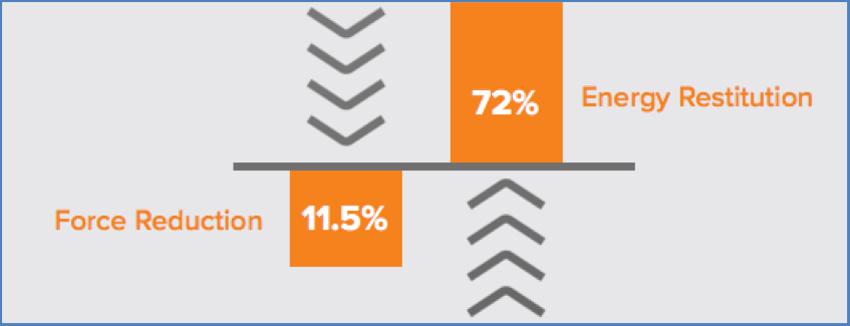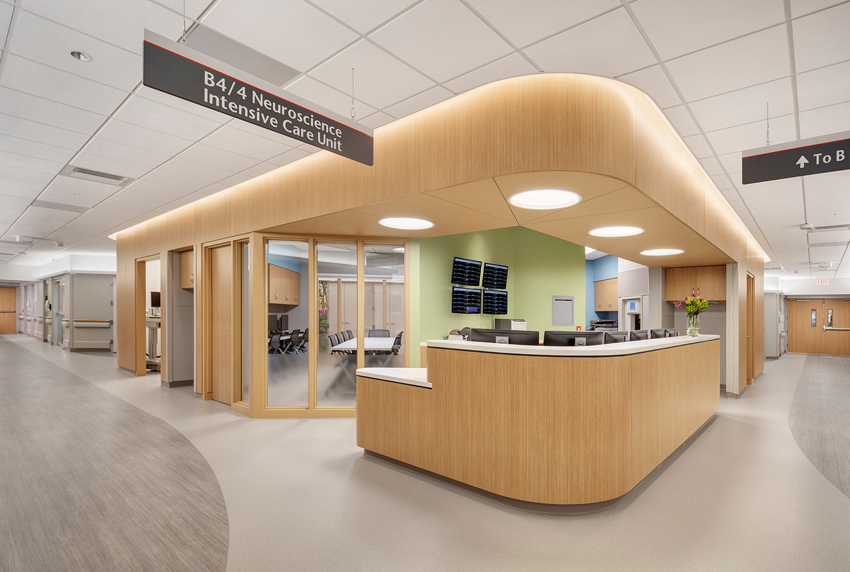Health-Care Flooring for the New Normal
Ergonomics
Selecting the right surface can contribute to the comfort of the people using it, in addition to potentially reducing the risk of serious injury from a fall. When it comes to the comfort of a surface underfoot, the force reduction and energy restitution of a surface must be considered.
Ergonomic surfaces balance the absorption of force and the return of energy. Two common terms used to describe this relationship are force reduction and energy restitution.
Force reduction: This is how much energy a surface absorbs; for example, when a person walks on it. Surface of concrete would have extremely low force reduction because it absorbs very little energy, returning most of it back to the person’s feet, legs, and body.
This is tested and measured by ASTM F2569-11: Standard Test Method for Evaluating the Force Reduction Properties of Surfaces for Athletic Use.
Energy restitution: This is how much the surface returns energy. A surface of sand has very little energy restitution and high force reduction, meaning it will absorb almost all the energy and return very little back to the person’s body, making walking difficult and fatiguing. When specifying flooring for a health-care space, it should be selected based on the force reduction and energy restitution desired for the application.

Energy restitution is how much energy a surface returns. Force reduction is how much energy a surface absorbs.
Slips and Falls
The health-care industry has been guided by long-standing requirements for coefficient of friction (COE) to prevent slips. But what has never been addressed is the actual impact that happens when a fall does occur. And falls do occur even when strict protocols are followed. Ironically, there are playground safety standards as noted in ASTM F 1292 for Height Impact Criteria. Yet no such standard exists for hospitals or senior care facilities.
Therefore, it is incumbent on the designer or specifier to pay attention to the flooring being considered and how it affects impacts. A lessened impact could make the difference between a minor and a major injury.
Hygienic surfaces
Up to this point, we are already asking a lot from our health-care setting flooring: comfort, noise reduction, fall impact reduction, etc. But there is another element that is especially critical in health-care settings in these times: surfacing that helps prevent the spread of viruses, germs, and bacteria. Flooring that helps stop the spread of pathogens must perform well on three levels: 1) be a cleanable surface, 2) be compatible with cleaning products, and 3) have welded seams.
While much attention is given to surfaces such as countertops and handrails where viruses can be transmitted from person to person, viruses can also be transmitted on flooring from room to room. Research is underway regarding the migration of microbes through shoe traffic. Specifying a flooring material that can be effectively and efficiently cleaned is more important now than ever.
Plus, the flooring surface must be impervious to the robust cleaning products used in a health-care setting. This means it should not discolor or deteriorate when cleaning products are used.
Finally, the flooring should be seamless, with welded seams impervious to topical spills and liquids, especially in the flash coving. There is a critical need for sealed floors in patient rooms and corridors.
The case study on the next page shows how the proper specification of flooring contributes to the ability of a highly respected hospital to prevent the spread of pathogens.











